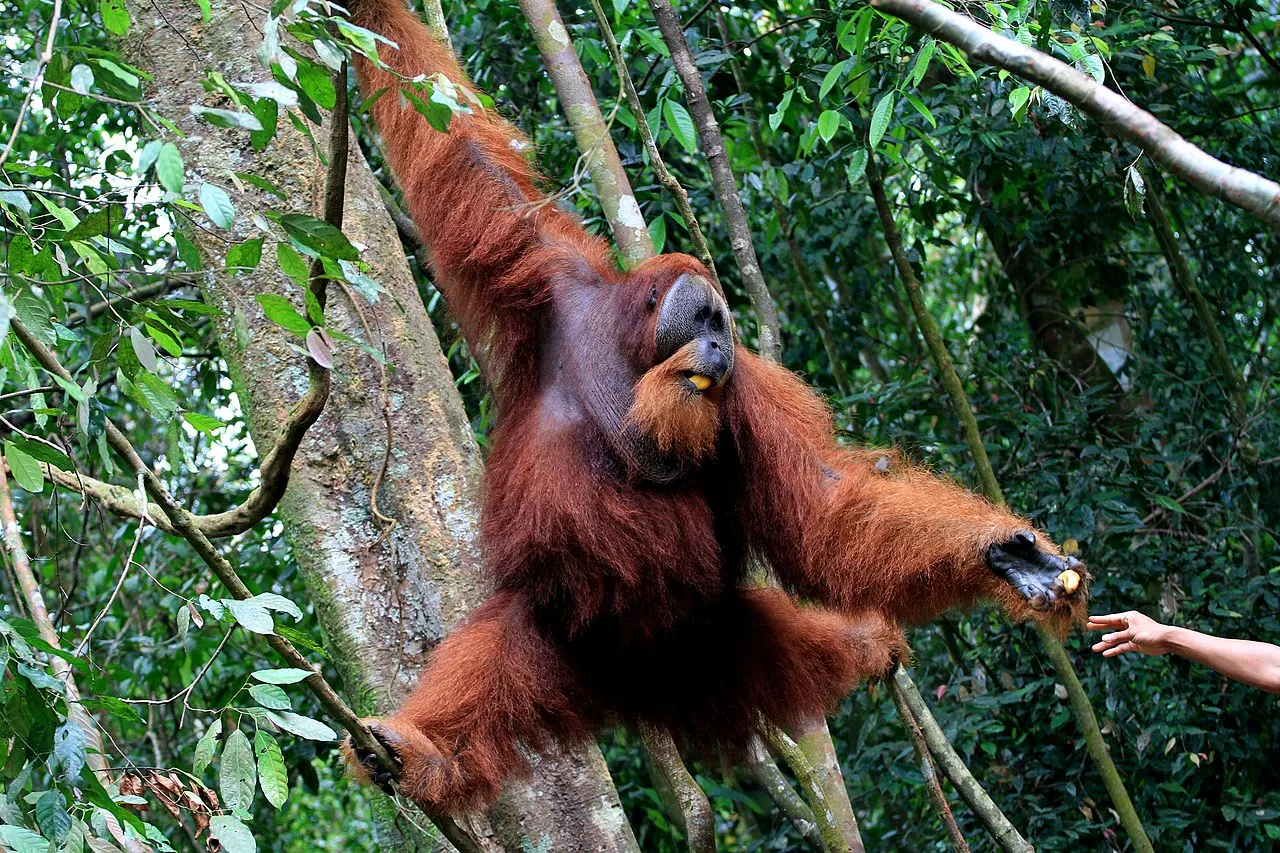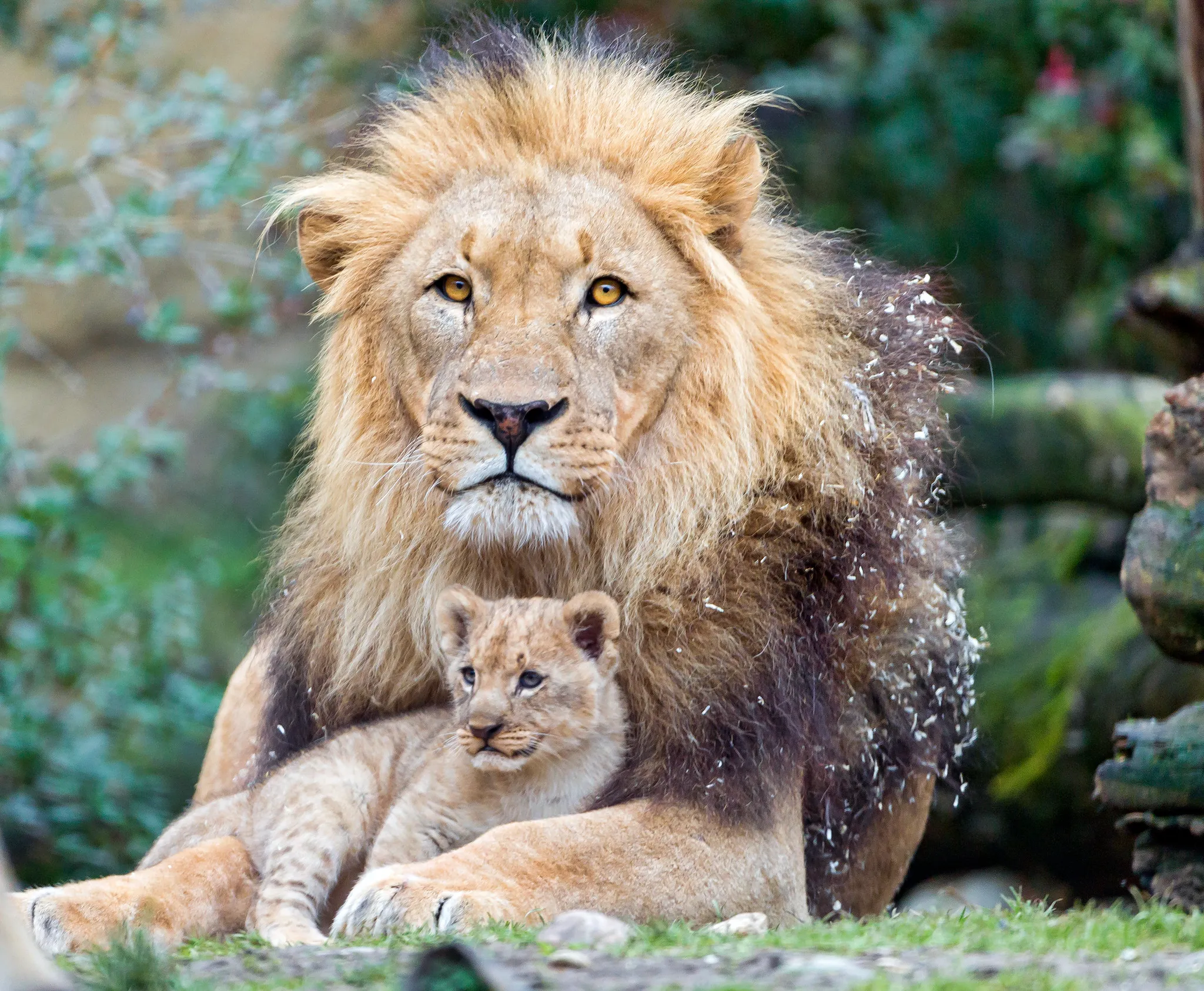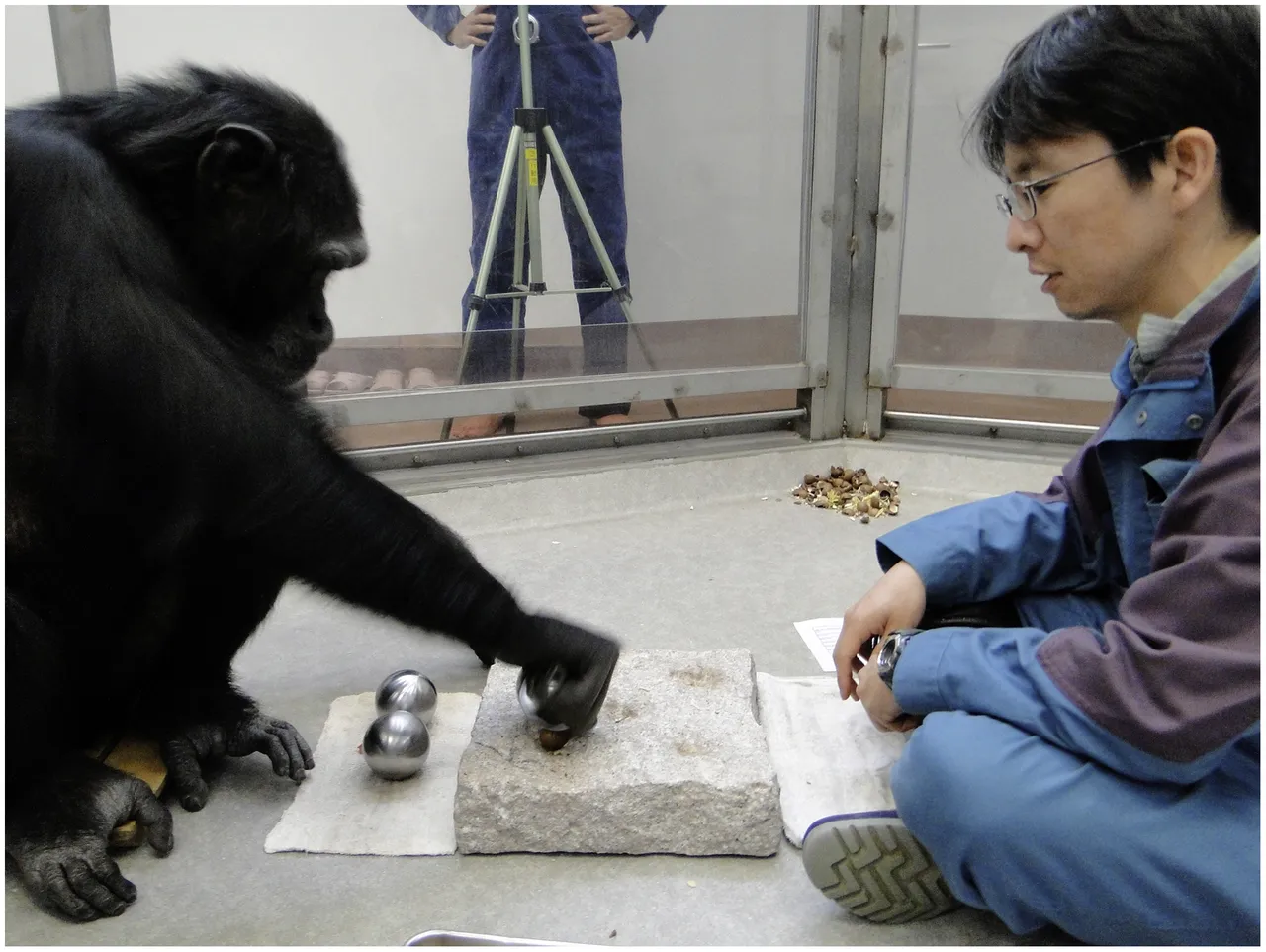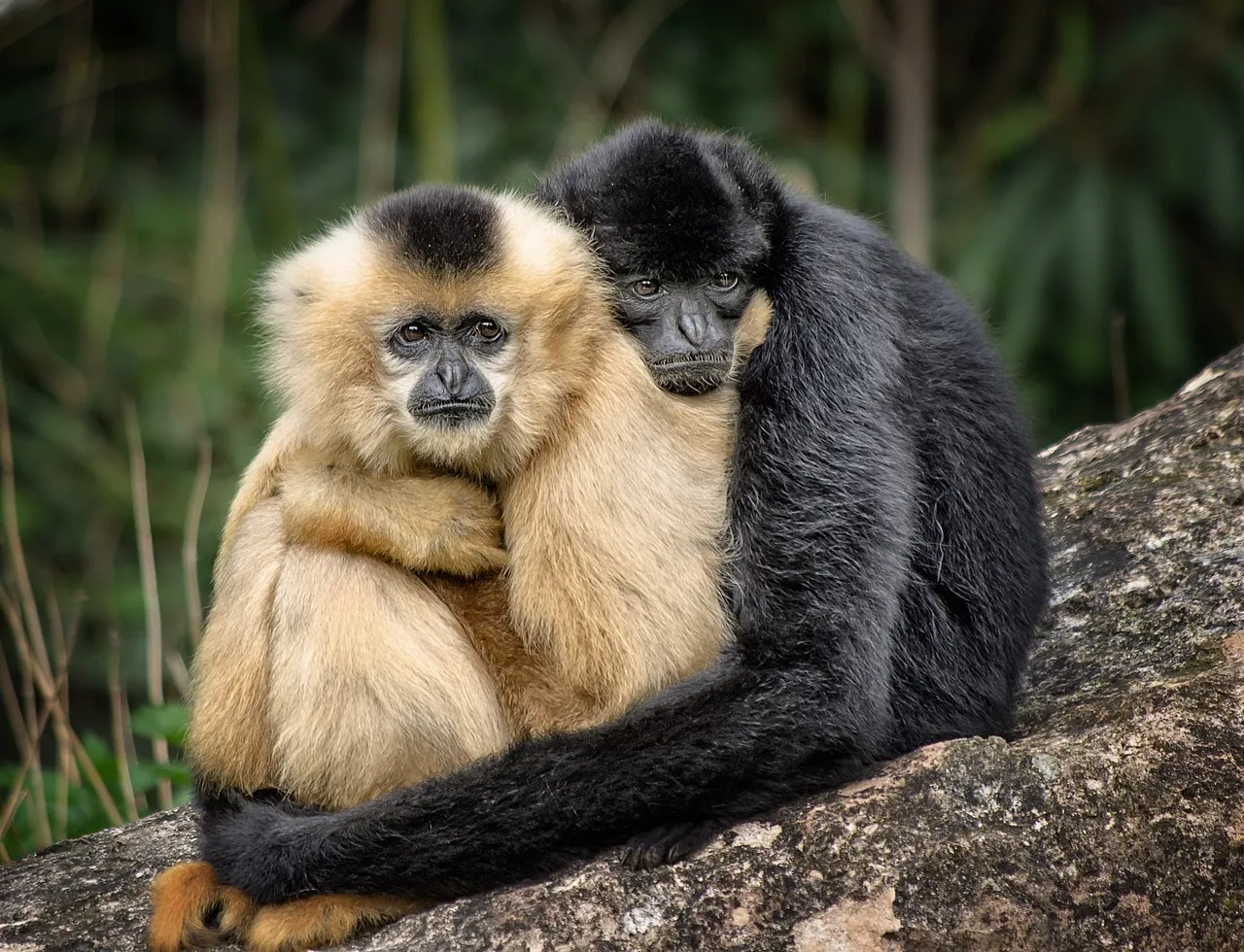Chimpanzee Vs Human Fight Prediction, Overall Comparison
In comparing between chimpanzees and humans, we uncover a spectrum of attributes that extends beyond their physical disparities. While both species share genetic similarities, the inherent strength and distinct characteristics of chimpanzees position them as formidable beings in hypothetical confrontations with unarmed humans.
I. Size and Weight Disparity:
– Adult chimpanzees, belonging to the Pan troglodytes species, typically weigh between 40 to 60 kg for males and 32 to 47 kg for females. In contrast, humans exhibit a broader range of sizes and weights, with average adults standing at varying heights and weighing between 57 and 110 pounds.
II. Genetic Proximity:
– Despite genetic similarities between chimpanzees and humans, the differences in physical strength and muscle control become apparent in their distinct anatomical structures.
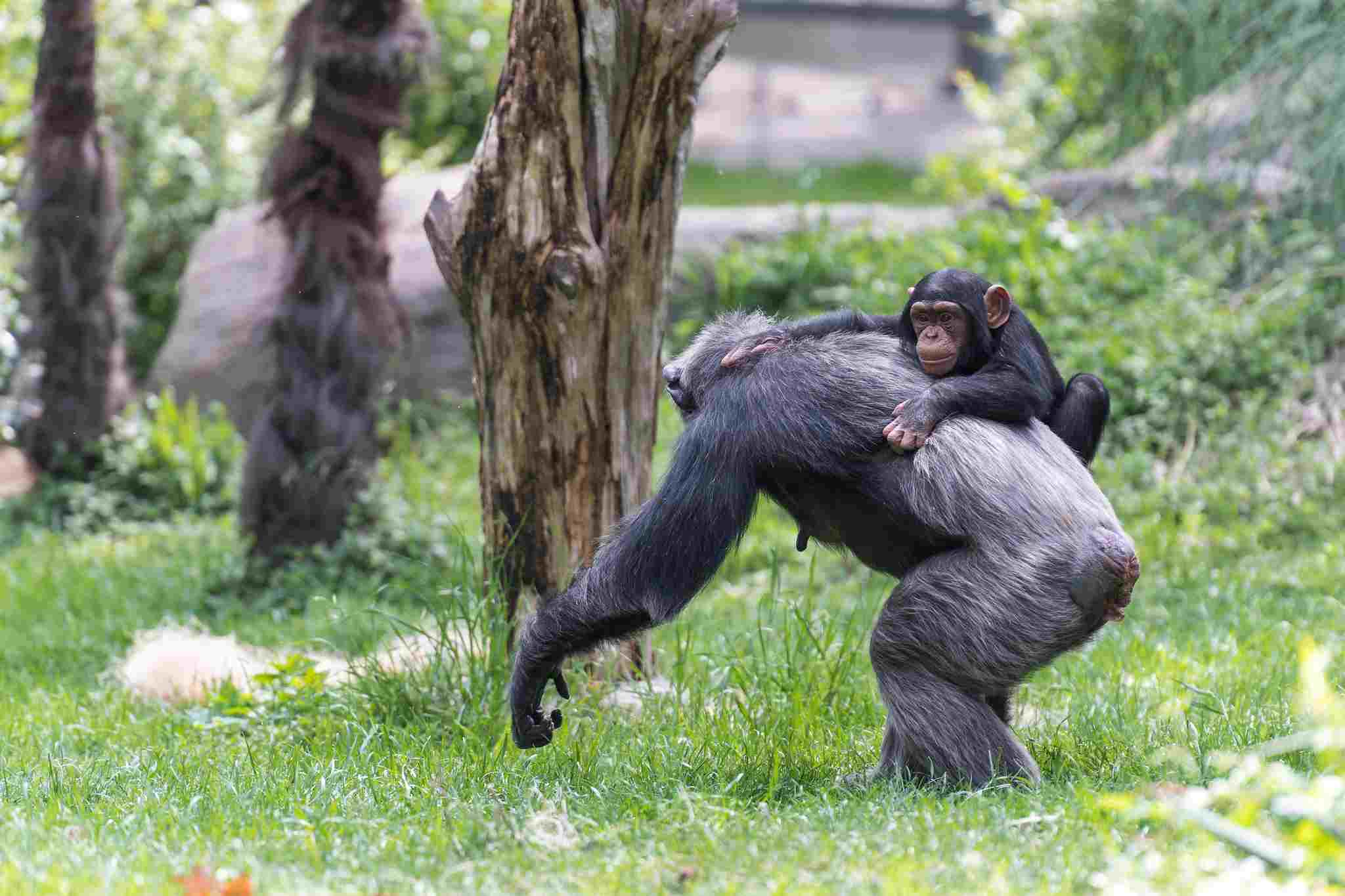
III. Muscular Strength:
– Chimpanzees possess superior muscle strength compared to humans, and their control over muscle function differs. In certain scenarios, chimpanzees may exert more muscle strength than necessary.
IV. Hypothetical Confrontation:
– In a fight between an unarmed human of average weight and a chimpanzee, the chimpanzee’s enhanced strength, coupled with its evolved musculature, could potentially tip the scales in its favor.

V. Scientific Insights:
– Research suggests that chimpanzees exhibit unique muscle architecture, including longer muscle fibers, contributing to their exceptional strength compared to humans.
*Details of Comparison
| Criteria | Chimp | Human |
| Appearance | Coarse fur, prominent facial features |
Varied skin tones, upright posture
|
| Size | 3 to 5.6 feet | 4.9 to 6.2 feet |
| Weight | 70 to 130 pounds |
90 to 200 pounds
|
| Bite Force (PSI) | 1,300 PSI | 162 PSI |
| Physical Offensive Advantages | Muscles, sharp teeth |
Tool use, problem-solving
|
| Physical Defensive Advantages | Climbing, group defense |
Cognitive strategies, tool use
|
| Speed | 25 mph | 15 to 20 mph |
| Agility | Tree-climbing, ground movement |
Versatility in terrains
|
| Senses | Sharp smell, day-night vision |
Weaker smell, diurnal color vision
|
| Overall Physical Capacity | Muscular strength, climbing |
Endurance, fine motor skills
|
| Habitat Preference | Tropical rainforests |
Diverse global environments
|
| Tracks | Handprints, footprints |
Varied, influenced by footwear
|
| Lifespan | 40 to 50 years | 70 to 90 years |
| Mode of Feeding | Omnivorous, hunting |
Omnivorous, cooking
|
| Intelligence | Problem-solving, tool use |
Advanced cognitive abilities
|
| Social Behavior | Complex communities |
Diverse social structures
|
| Mode of Reproduction | Sexual reproduction, 230 days gestation |
Sexual reproduction, 280 days gestation
|
| Parental Behavior | Mother-offspring bonds |
Extensive parental care
|
| Proximity to Human-Inhabited Areas | Remote forest areas |
Global urban to rural
|
| Behavior Toward Humans | Avoidant, may show aggression |
Varied, influenced by culture
|
| Danger Posed to Humans | Aggression if provoked |
Varied, context-dependent
|
| Associated Precautions | Caution in natural habitat |
Diverse precautions
|
| Conservation Status | Endangered due to various threats |
Not applicable in wildlife conservation
|
Key Points
- Shared biological heritage within the family Hominidae.
- Both omnivorous with complex social behaviors.
- Distinct differences in appearance, size, and physical capacities.
- Chimps adapted to tropical rainforests; humans display global adaptability.
- Humans exhibit advanced cognitive abilities and complex social structures.
- Chimps are endangered due to habitat loss, poaching, and diseases.
- Humans, as a species, don’t have a conservation status in the same context as wildlife.
1. Taxonomy:
Chimp:
Family: Hominidae
Genus: Pan
Species: Pan troglodytes
Human:
Family: Hominidae
Genus: Homo
Species: Homo sapiens
2. Appearance:
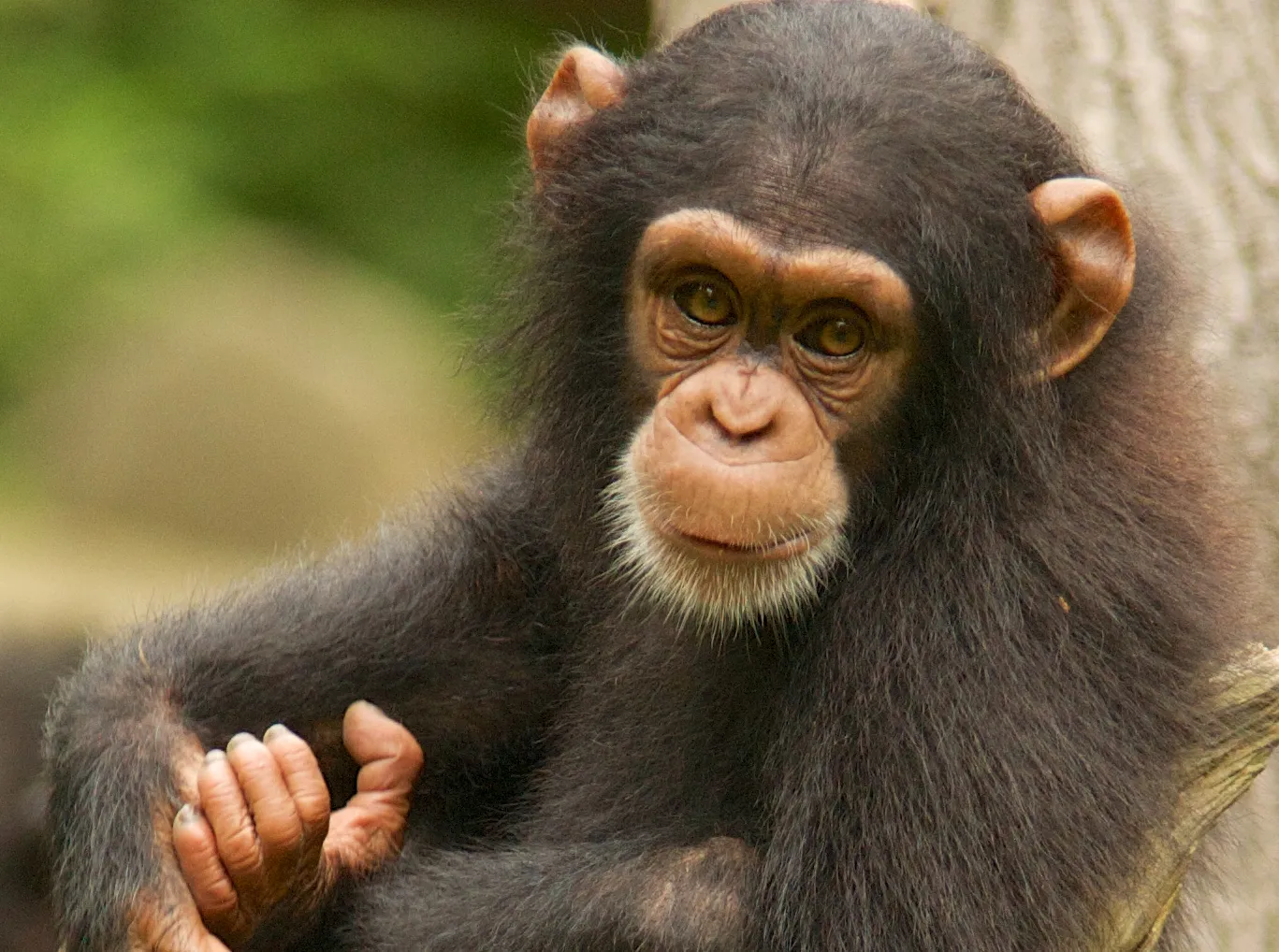
Chimp:
Covered in coarse black or brown fur.
Prominent facial features, including a protruding jaw.
Longer arms compared to legs.
Human:
Varied skin tones, hair colors, and eye colors.
Upright posture, distinct facial features.
Lack of significant body hair compared to chimps.
Comparison: Humans exhibit diverse physical appearances, while chimps share more uniform characteristics within their species.
Ecological Implications: Chimps’ fur provides insulation in their natural habitats, while human diversity may result from adaptation to different environments.
3. Size:

Chimp:
Height: Approximately 3 to 5.6 feet (males larger than females).
Human:
Height: Varies globally, but generally between 4.9 to 6.2 feet (males taller on average).
Comparison: Humans generally have a wider range of heights, but the size difference is notable between chimp sexes.
Ecological Implications: Chimps’ size may aid in climbing trees, while human height differences might reflect adaptations to diverse climates and resources.
4. Weight:
Chimp:
Weight: Around 70 to 130 pounds (males heavier).
Human:
Weight: Varies globally, but typically 90 to 200 pounds (males heavier on average).
Comparison: Humans tend to have a broader weight range, and males generally outweigh female humans more than male chimps outweigh female chimps.
Ecological Implications: Chimps’ weight is adapted for arboreal life, while human weight variations may reflect adaptations to different diets and lifestyles.
5. Bite Force (PSI – Pounds per Square Inch):


Chimp:
Bite Force: Around 1,300 PSI.
Human:
Bite Force: Approximately 162 PSI.
Comparison: Chimps have a significantly stronger bite force compared to humans.
Ecological Implications: Chimps use their strong jaws for cracking nuts and fruits, while human bite force is adapted to a more varied diet involving cooking and tool use.
6. Physical Offensive Advantages:

Chimp:
Powerful muscles and agility.
Sharp canine teeth.
Human:
Tool use and complex problem-solving abilities.
Comparison: Chimps rely on physical strength, while humans employ tools and intellect for offense.
Ecological Implications: Chimps’ offensive abilities are crucial for hunting and survival, whereas human tools contribute to adaptability and resource utilization.
7. Physical Defensive Advantages:
Chimp:
Agility and climbing skills.
Strong social bonds for group defense.
Human:
Cognitive abilities for complex defense strategies.
Use of weapons and tools.
Comparison: Chimps emphasize group defense and climbing, while humans rely on cognitive and technological advantages.
Ecological Implications: Chimps’ defensive strategies are rooted in social structures, while human defense involves a combination of intellect and tools.
8. Speed (Km/hour or Mile/hour):

Chimp:
Sprint speed of about 25 mph (40 km/h).
Human:
Sprint speed varies but generally 15 to 20 mph (24 to 32 km/h).
Comparison: Chimps have a faster sprint speed than humans.
Ecological Implications: Chimps’ speed aids in hunting and evading predators, while human endurance contributes to persistence hunting.
9. Agility:
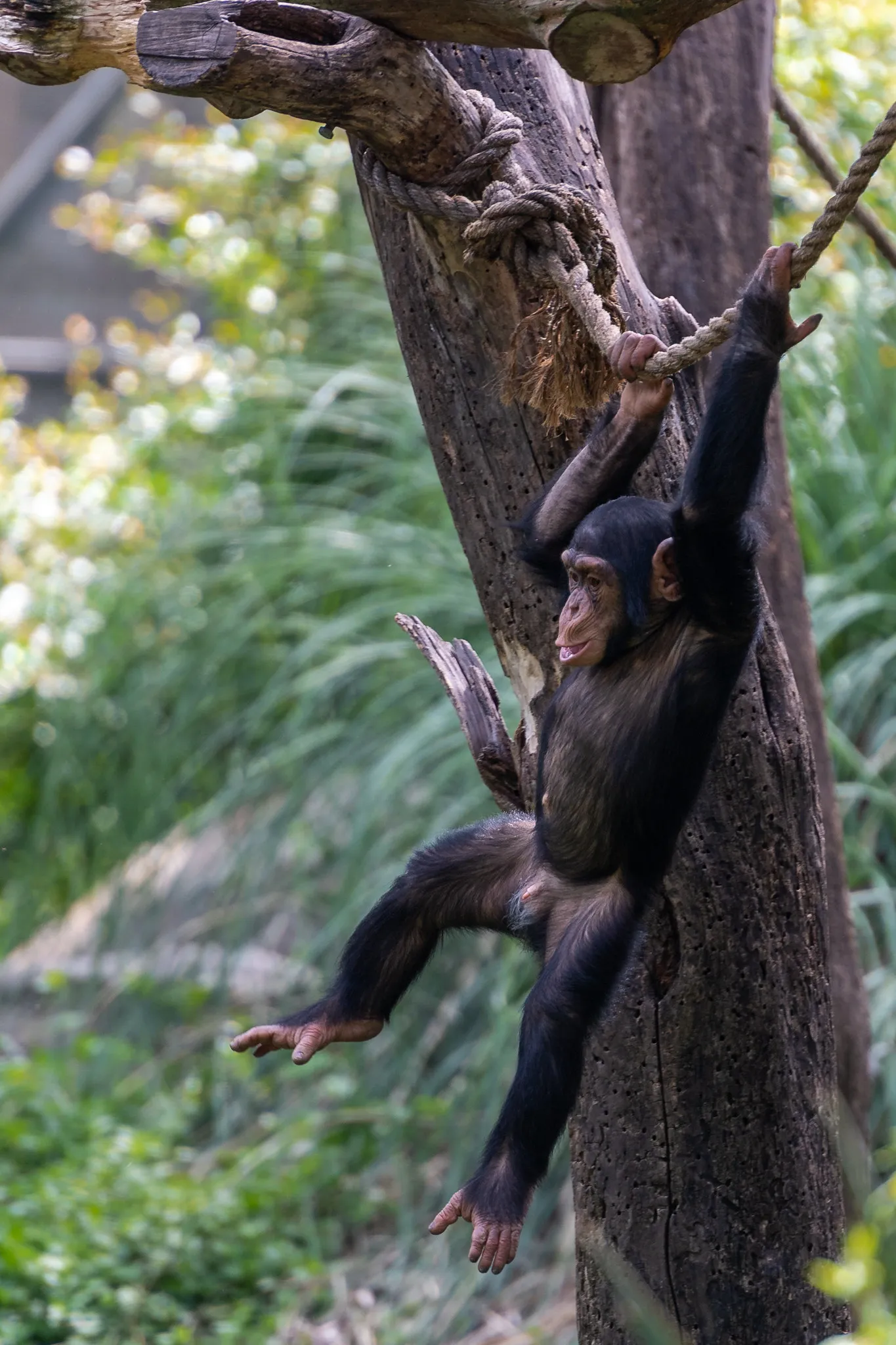

Chimp:
Exceptional tree-climbing and swinging abilities.
Nimble movement on the ground.
Human:
Adaptability in various terrains.
Precision in fine motor skills.
Comparison: Chimps excel in arboreal agility, while humans showcase versatility in different environments.
Ecological Implications: Chimps’ agility is crucial for navigating dense forests, while human adaptability supports survival in diverse landscapes.
10. Senses:
Chimp:
Sharp sense of smell.
Excellent vision for both day and night.
Human:
Relatively weaker sense of smell.
Primarily diurnal vision, with color perception.
Comparison: Chimps often have superior olfactory senses, while humans excel in color vision and visual acuity.
Ecological Implications: Chimps’ keen senses aid in locating food and navigating their environment, while human vision is adapted for various tasks including tool use and communication.
11. Overall Physical Capacity:
Chimp:
Muscular strength and endurance.
Climbing and swinging capabilities.
Human:
Exceptional endurance and adaptability.
Fine motor skills for complex tasks.
Comparison: Chimps focus on physical strength and specialized movements, while humans exhibit a balance of endurance, strength, and fine motor skills.
Ecological Implications: Chimps’ physical capacity aligns with their arboreal lifestyle, while human versatility supports survival in diverse habitats.
12. Habitat Preference(s) and Geographic Region:

Chimp:
Dense tropical rainforests in Africa.
Human:
Inhabits a wide range of environments globally, from arctic to tropical regions.
Comparison: Chimps have a more specific habitat preference, while humans display adaptability to various climates and terrains.
Ecological Implications: Chimps’ habitat choice reflects their dependence on specific ecosystems, while human adaptability contributes to widespread colonization.
13. Tracks:
Chimp:
Handprints and footprints in mud or soft ground.
Human:
Varied, influenced by footwear and walking styles.
Comparison: Chimp tracks often include distinctive handprints, while human tracks are influenced by cultural and technological factors.
Ecological Implications: Chimps’ tracks can indicate recent activity, while human tracks may reveal cultural and technological aspects of a group.
14. Lifespan:
Chimp:
Around 40 to 50 years in the wild.
Human:
Varied but generally 70 to 90 years.
Comparison: Humans typically have a longer lifespan compared to chimpanzees.
Ecological Implications: Chimps’ shorter lifespan is adapted to the challenges of their environment, while human longevity is influenced by a combination of biological and societal factors.
15. Mode of Feeding:
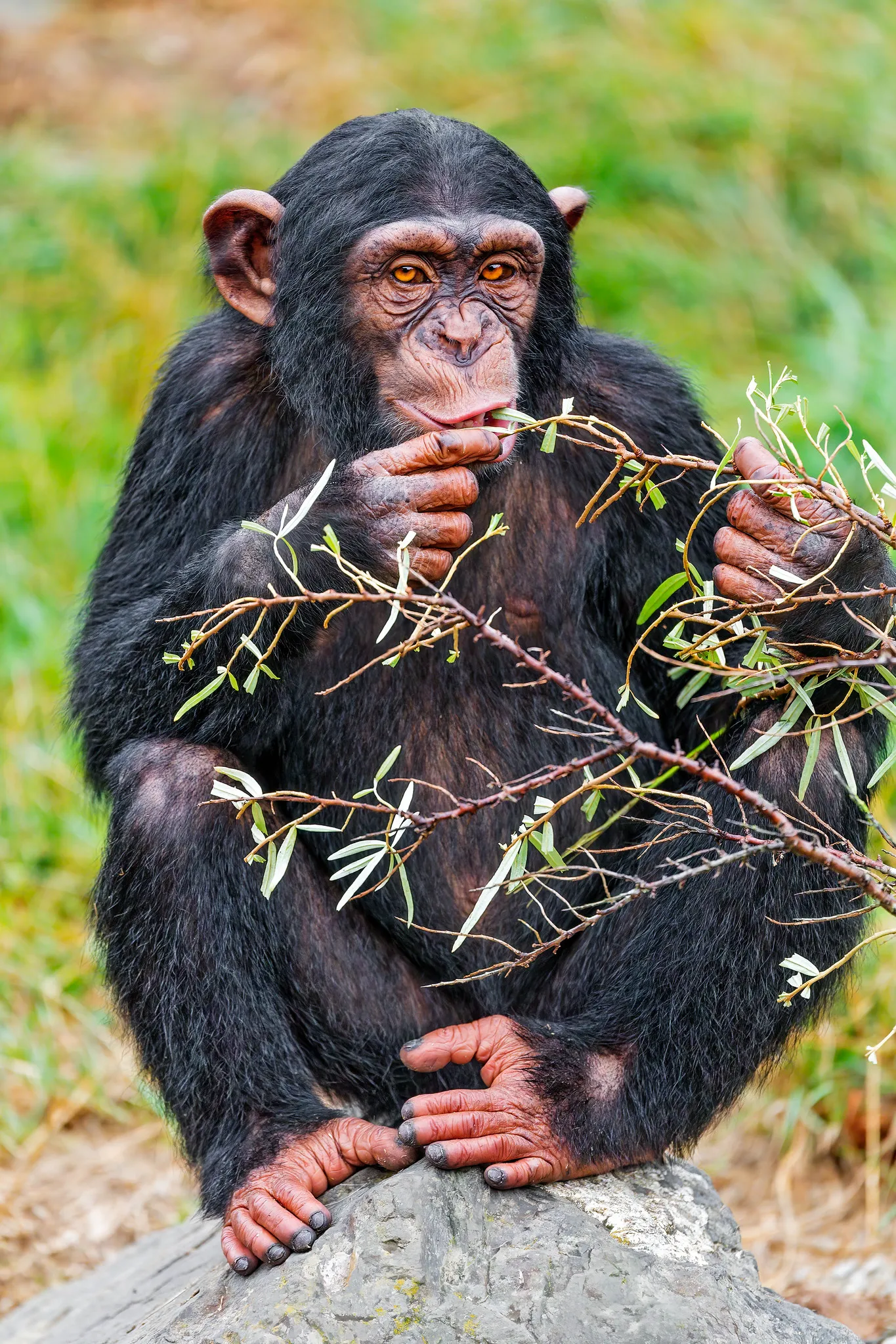
Chimp:
Omnivorous diet including fruits, leaves, insects, and occasional hunting.
Human:
Omnivorous diet with a wide range of cooked and processed foods.
Comparison: Chimps and humans share an omnivorous diet, but the specifics differ.
Ecological Implications: Chimps’ diet reflects their adaptation to the forest ecosystem, while human dietary diversity is influenced by cultural and technological factors.
16. Intelligence:
Chimp:
High problem-solving abilities, tool use, and social intelligence.
Human:
Advanced cognitive abilities, complex language, and abstract thinking.
Comparison: While chimps display impressive intelligence, human cognitive abilities, including language and abstract reasoning, are unparalleled.
Ecological Implications: Chimps use intelligence for survival and social cohesion, while human intellect supports complex societies and technological advancements.
17. Social Behavior:
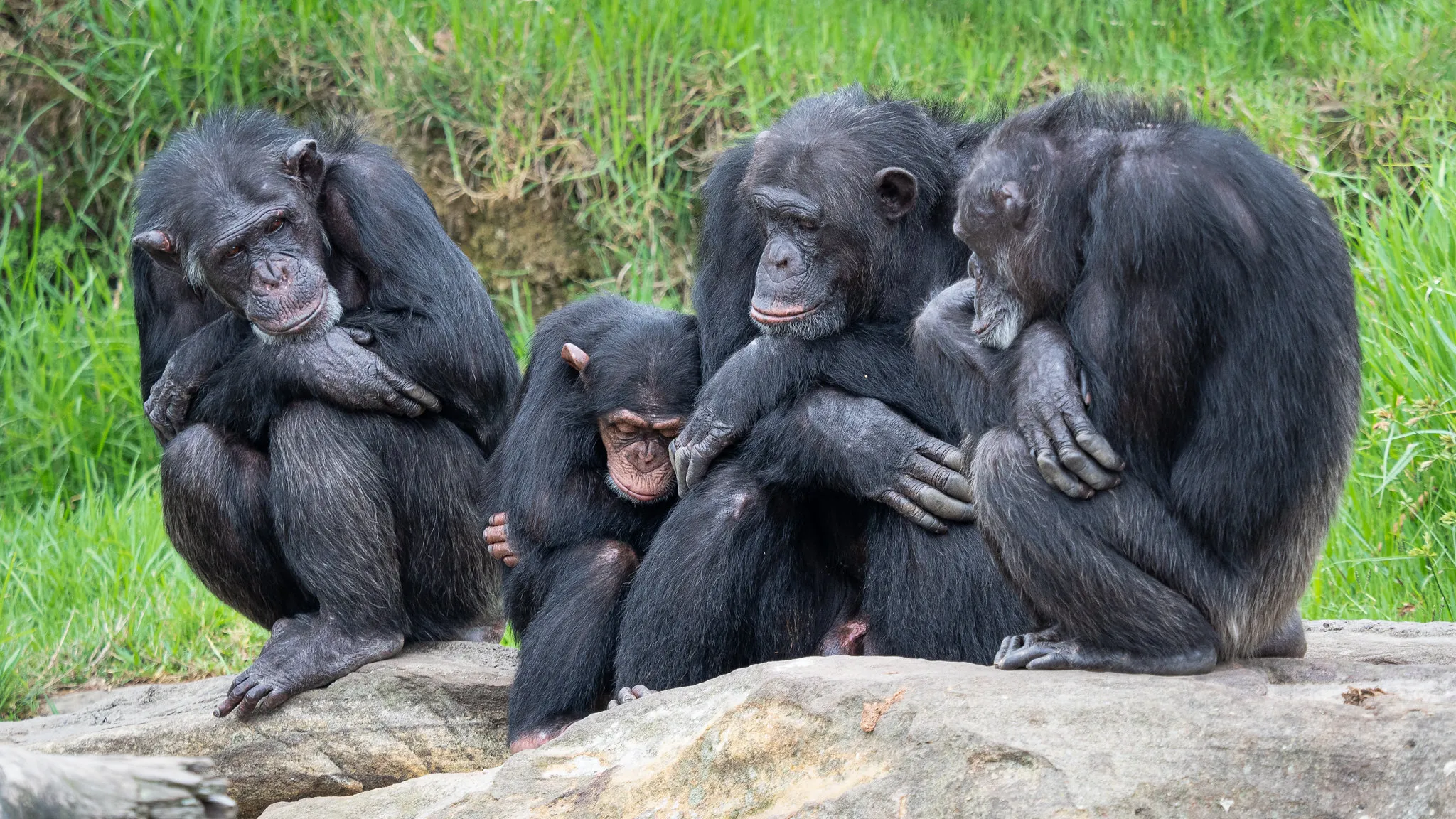
Chimp:
Live in communities with complex social structures.
Hierarchical with dominant males.
Human:
Complex societies with diverse social structures.
Varied social hierarchies influenced by culture.
Comparison: Both chimps and humans exhibit complex social behaviors, but the structures differ.
Ecological Implications: Chimps’ social structures contribute to group cohesion and survival, while human social complexity enables diverse cooperative endeavors and cultural development.
18. Mode of Reproduction:
Chimp:
Sexual reproduction with a gestation period of about 230 days.
Human:
Sexual reproduction with a gestation period of around 280 days.
Comparison: Both chimps and humans reproduce sexually, but the gestation period differs.
Ecological Implications: The gestation period reflects adaptations to different reproductive strategies in their respective environments.
19. Parental Behavior:
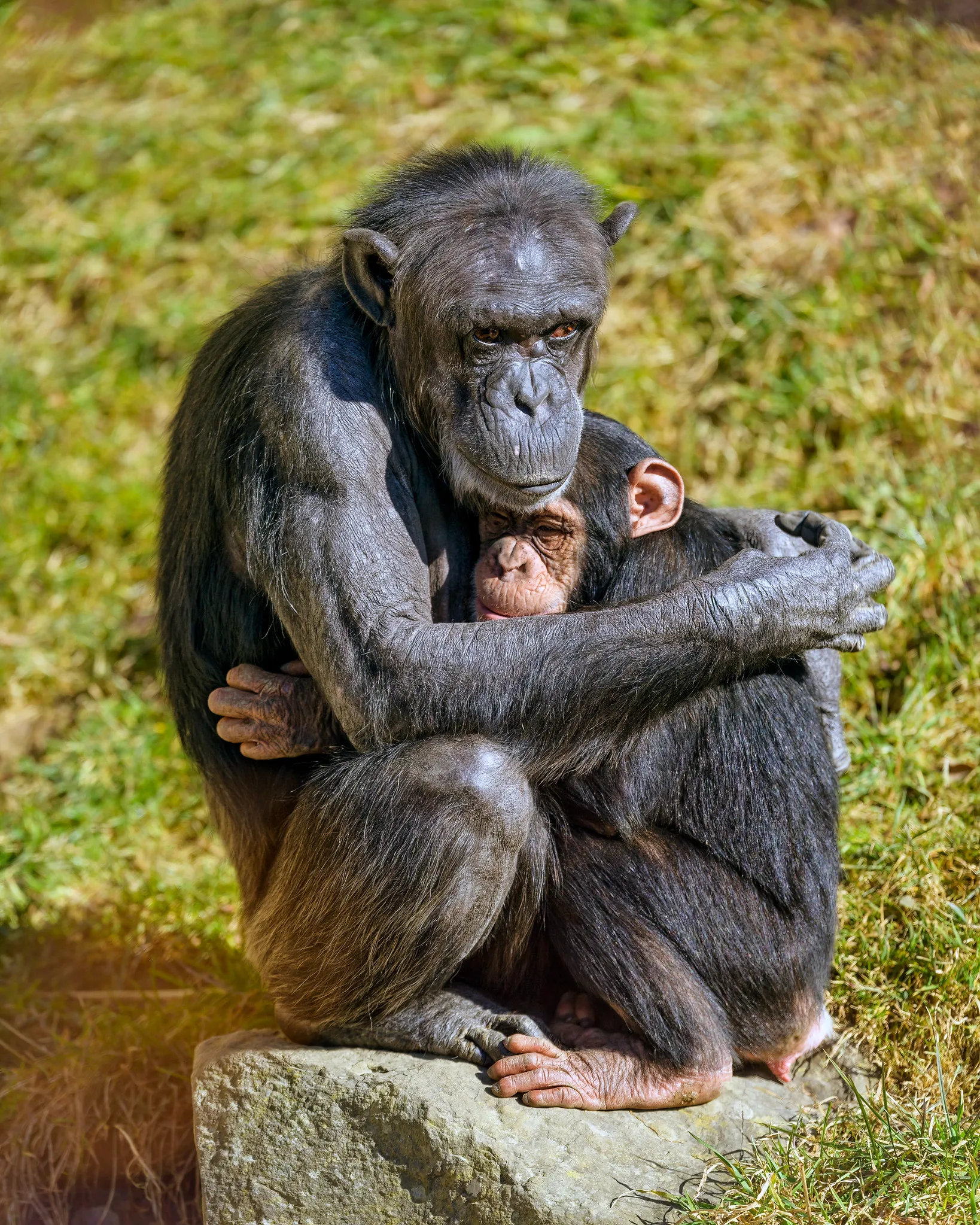
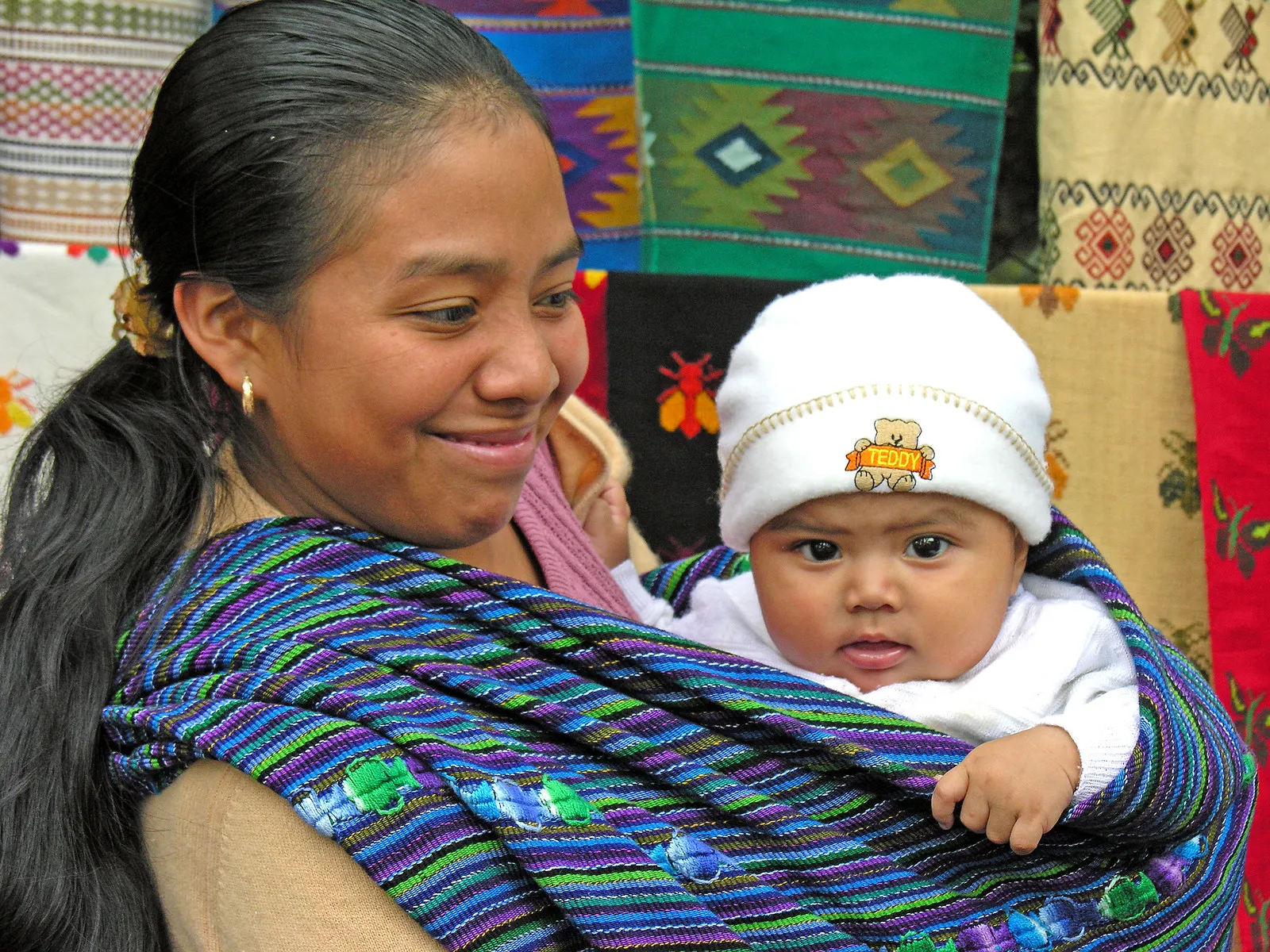
Chimp:
Mothers provide care and protection, and offspring have strong bonds with the mother.
Human:
Extensive parental care, often involving both parents, with strong parent-child bonds.
Comparison: Both species exhibit strong parent-offspring bonds, but the extent of parental care varies.
Ecological Implications: Chimps’ parental behavior supports the development of offspring in their forest environment, while human parental care contributes to the complex socialization of children in diverse societies.
20. Proximity to Human-Inhabited Areas:
Chimp:
Primarily found in remote forested areas away from human settlements.
Human:
Inhabits a wide range of environments, including urban, suburban, and rural areas.
Comparison: Chimps generally avoid human-inhabited areas, while humans have adapted to diverse living environments.
Ecological Implications: Chimps’ avoidance of human settlements helps maintain their natural behaviors, while human adaptability contributes to successful colonization of various habitats.
21. Behavior Toward Humans:
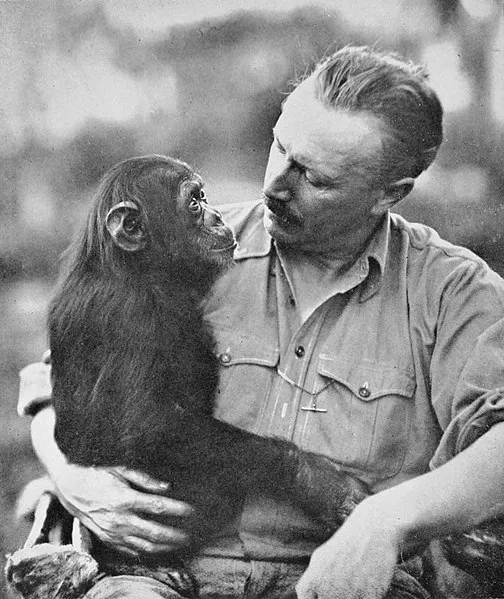
Chimp:
Generally avoidant and may show aggression if threatened.
Human:
Varied, influenced by cultural and individual factors.
Comparison: Chimps tend to be more wary of humans, while human behavior toward chimps can vary widely.
Ecological Implications: Chimps’ wariness is a survival strategy in response to potential threats from humans, while human behavior reflects a range of cultural attitudes and interactions with wildlife.
22. Danger Posed to Humans:
Chimp:
Can be dangerous if provoked, displaying aggression and physical strength.
Human:
Varied, influenced by individual behaviors and societal factors.
Comparison: Chimps can pose a physical threat, while human danger is influenced by a complex interplay of factors.
Ecological Implications: Chimps’ potential danger to humans is a result of their natural behaviors, while human behavior can influence the level of risk.
23. Associated Precautions:
Chimp:
Caution advised in their natural habitat, avoiding provocation.
Human:
Varied precautions depending on specific contexts, from wildlife conservation to safety in human-populated areas.
Comparison: Precautions around chimps involve understanding and respecting their natural behaviors. Human precautions are diverse, considering the complexity of human societies.
Ecological Implications: Implementing precautions for both species helps maintain a balance between coexistence and safety.
24. Conservation Status:
Chimp:
Endangered due to habitat loss, poaching, and diseases.
Human:
Not applicable in the same conservation context as wildlife species.
Comparison: Chimps face conservation challenges as a wildlife species, while humans operate within societal and cultural contexts.
Ecological Implications: Chimps’ conservation status reflects the impact of human activities on their natural habitats, highlighting the need for conservation efforts.
*Summary of Comparison
Appearance:
Chimp: Coarse fur, prominent facial features.
Human: Varied skin tones, upright posture, less body hair.
Size:
Chimp: 3 to 5.6 feet.
Human: 4.9 to 6.2 feet.
Weight:
Chimp: 70 to 130 pounds.
Human: 90 to 200 pounds.
Bite Force (PSI):
Chimp: 1,300 PSI.
Human: 162 PSI.
Physical Offensive Advantages:
Chimp: Muscles, sharp teeth.
Human: Tool use, problem-solving.
Physical Defensive Advantages:
Chimp: Climbing, group defense.
Human: Cognitive strategies, tool use.
Speed:
Chimp: 25 mph.
Human: 15 to 20 mph.
Agility:
Chimp: Tree-climbing, ground movement.
Human: Versatility in terrains.
Senses:
Chimp: Sharp smell, day-night vision.
Human: Weaker smell, diurnal color vision.
Overall Physical Capacity:
Chimp: Muscular strength, climbing.
Human: Endurance, fine motor skills.
Habitat Preference:
Chimp: Tropical rainforests.
Human: Diverse global environments.
Tracks:
Chimp: Handprints, footprints.
Human: Varied, influenced by footwear.
Lifespan:
Chimp: 40 to 50 years.
Human: 70 to 90 years.
Mode of Feeding:
Chimp: Omnivorous, hunting.
Human: Omnivorous, cooking.
Intelligence:
Chimp: Problem-solving, tool use.
Human: Advanced cognitive abilities.
Social Behavior:
Chimp: Complex communities.
Human: Diverse social structures.
Mode of Reproduction:
Chimp: Sexual reproduction, 230 days gestation.
Human: Sexual reproduction, 280 days gestation.
Parental Behavior:
Chimp: Mother-offspring bonds.
Human: Extensive parental care.
Proximity to Human-Inhabited Areas:
Chimp: Remote forest areas.
Human: Global urban to rural.
Behavior Toward Humans:
Chimp: Avoidant, may show aggression.
Human: Varied, influenced by culture.
Danger Posed to Humans:
Chimp: Aggression if provoked.
Human: Varied, context-dependent.
Associated Precautions:
Chimp: Caution in natural habitat.
Human: Diverse precautions.
Conservation Status:
Chimp: Endangered due to various threats.
Human: Not applicable in wildlife conservation.
Conclusion
I. Similarities
Shared biological heritage within the family Hominidae.
Omnivorous diet and complex social behaviors.
II. Differences
Divergent physical characteristics, including size, appearance, and abilities.
Varied ecological adaptations and responses to human-inhabited areas.

